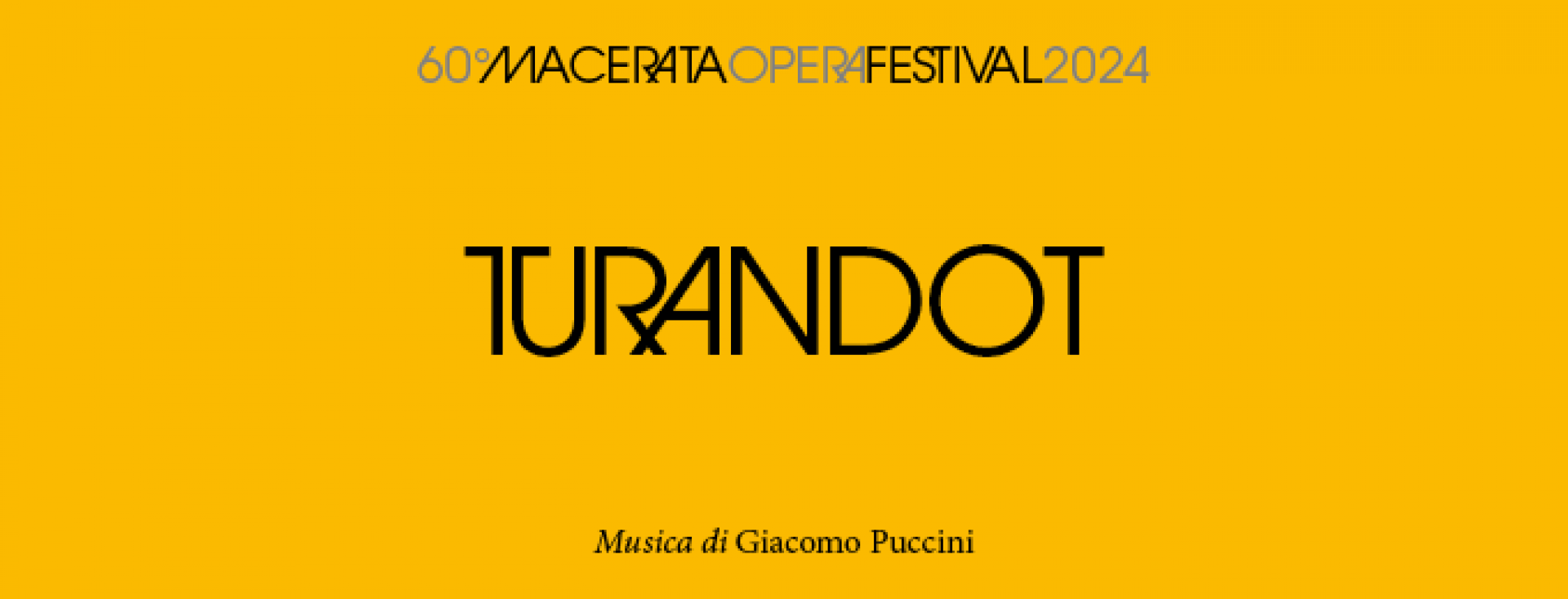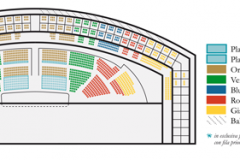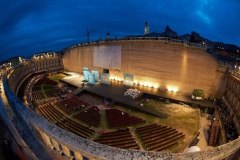Turandot Macerata Opera Festival 2024
Mo | Tu | We | Th | Fr | Sa | Su |
Turandot (19 and 28 July, 3 and 10 August) by Giacomo Puccini. The opera will be performed in its unfinished version, as the composer left it and as it was first performed at Teatro alla Scala in Milan, with Arturo Toscanini as conductor. The stage director for this cruel and passionate story of love and death, set in Beijing “at the time of fairytales”, is Paco Azorín, who is back at the Sferisterio for this new production after staging Otello in 2016. The opera will be conducted by Francesco Ivan Ciampa, universally acclaimed at the Sferisterio in 2019 for Macbeth. The main artists in this production are Olga Maslova (Turandot), Angelo Villari (Calaf), Ruth Iniesta (Liù), Antonio Di Matteo (Timur), Lodovico Filippo Ravizza (Ping), Paolo Antognetti (Pang) and Francesco Pittari (Pong). Lyric drama in three acts, libretto by Giuseppe Adami and Renato Simoni. It is inspired by the theatrical fable by Carlo Gozzi. Giacomo Puccini left it unfinished when he died on 29 November 1924. It was first performed in its unfinished version at Teatro alla Scala in Milan, on 26 April 1926. Two different endings were composed, the first one by Franco Alfano and the second, more recent one by Luciano Berio. It is inspired by an imaginary Eastern land and it tells the story of the challenge of passion and strength between Calaf and the icy princess Turandot, countered by the pure love of Liù.
Program and cast
Macerata Sferisterio
History
An ancient Italian national sport or pallone col bracciale was the most popular sport in Italy for almost five centuries. This game dated back to the 15th century. The people of Macerata decided that they needed somewhere large to play and watch it; a place that could also be used for public spectacles such as circuses and even bull fights. One hundred citizens raised the money themselves, and got Ireneo Aleandri to design and build it. The design involved the destruction and rebuilding of some of the historic city walls next to the Porta Mercato gate.
The strait side of the arena is a wall 18 metres high and 88 metres long, along which is a line of arches separated by 56 columns carrying a double row of boxes, and a stone gallery, all in Neoclassical style.
Over the years the popularity of pallone decreased and that of football replaced it. In 1919 the surface was levelled to allow for this, and also for tennis courts. The arena had been used for the occasional theatrical event from 1871, but from about 1914 opera began to be put on there.
Present day use[edit]
In 1921, as the first presentation of what would become the Sferisterio Opera Festival, Pieralberto Conti staged Verdi's Aida paid for by the soprano, Francisca Solari. This was followed by all parts of the arena, both front- and back-stage, being renovated and electricity introduced.
Today it holds an audience of over 3,000. The stage is 14.5 meters deep and 40 meters wide, with 10 meter wings each side of that. It is rather unusual shape for musical performances (musicians at each end of the pit cannot hear each other) but the acoustics are surprisingly good (at least near the middle).
The present day opera festival, beginning in the late 1980s and under the auspices of the Macerata Opera, takes place in this location.

 EN
EN DE
DE IT
IT FR
FR ES
ES RU
RU JP
JP RO
RO
 Seating plan
Seating plan 

